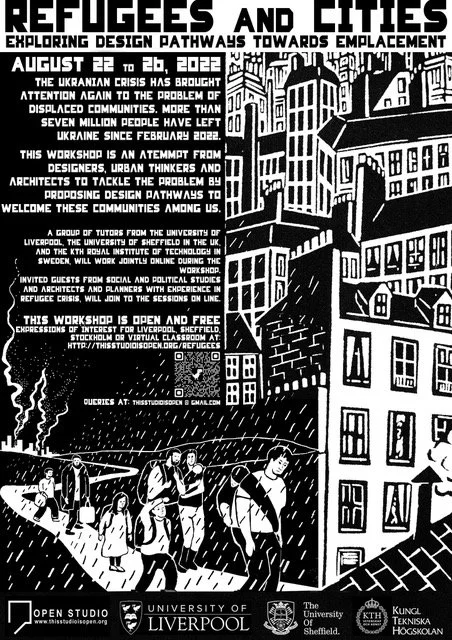WHY FOXES MUST TALK TO HEDGEHOGS AND ANTS: Towards an Understanding of Interdisciplinary Design
Aurelio David
Architecture has long been a multi-domain discipline. To be a good architect, according to university curricula, one has to master the principles of spatial composition, understand human needs and sociology of spaces, be aware of the qualities and properties of building materials, know the fundamentals of statics and construction, and have some kind of sensitivity towards history and context.
In opposition to an architect’s multi-domain “horizontal” knowledge, other professional disciplines are characterized by “vertical” knowledge, one that stretches deep into narrower domains. Indeed, for each of the aforementioned subjects, highly specialized professions exist, such as a sociologist, a civil engineer, a historian, an energy expert, and so forth.
The Russian-British philosopher Isaiah Berlin captured this idea of horizontal vs. vertical knowledge from the ancient Greek proverb: “The fox knows many things, but the hedgehog knows one big thing” (Berlin, 2013).
Both mental frameworks are necessary for the urban discipline to address the challenges of today, while planning sustainable, healthy cities for the future. Urban transformations are complex processes. Decisions to shape the physical environment of a city must account for - but not only - the needs of its communities, global and local market forces, while controlling resource consumption to sustain the biosphere, and - ideally - to make it so that the city system and its inhabitants survive natural disasters and crises.
Complex problems demand sophisticated approaches (Batty, 2007; Jabareen, 2013). In particular, one of the main challenges of complex problems is the lack of clear boundaries, which make them hard to pin down (Rittel and Webber, 1973). Empirical research suggests that multidisciplinary groups are more apt to successfully problematize complex problems, in virtue of the overlapping of different points of views brought to the table (Fischer, 2001).
However, unlike space shuttles, or other products of engineering, the design and transformation of urban spaces cannot be divorced from the local community inhabiting them, as people are an essential component of the urban fabric. It is partially because of this argument that - between the 50s and 60s - participation came about vested in democratic cloths.
Yet, there is more to meet the eye.
Under the term “local community” lie countless individuals who - like ants - conduct their daily routine by interacting with certain spatial settings. In doing so, citizens become experts of the everyday life of the space they use, and accumulate a certain kind of unarticulated local knowledge and wisdom (Fischer, 2000).
Without this locally gathered knowledge, experts may formulate strategies of intervention based on false assumptions and/or an incomplete understanding of the task at hand, which may lead to more or less unsuccessful design solutions.
Horst Rittel conceptualized this situation as a “symmetry of ignorance” (Rittel, 1984), whereby the knowledge built up by designers throughout years of education and practice might not be sufficient to properly address new urban problems (Sandercock, 1998).
Because local knowledge cannot be surrogated, as it exists only within the social fabric that produces it, the only way to tap into it is to reach out to the local community (Lasker and Weiss, 2003; Sandercock, 1998; Rydin, 2007).
Hence, aside from its democratic benefits, public participation may be an opportunity to create a place where experts and the locals meet to address common problems, provided that the following obstacles are overcome. First, the way laymen articulate their thoughts is different from the way experts do. The meeting of such diverse way of expressing thoughts must be levelled out, somewhat. Second, lay knowledge is partially tacit: citizens may not know that certain knowledge claims are important for the overall mission of the designer. Such claims must come to surface, somewhat.
Overall, the crux of the matter is the communication between experts and laymen.
If public participation reaches momentum under these hypotheses, a new design paradigm is bound to emerge. One in which architects, experts and laymen interact within a same shared space. Instead of pursuing the path of centralizing the knowledge, architects should seek to master diverse, decentralized knowledges; and learn how to tap into this amorphous magma at the most appropriate stage of design.
Complexity requires a shift towards models of collective intelligence permeated by radical uncertainty (Pellizzoni, 2003) and a precautionary doubt: designers must be confident about their knowledge deficit and should seek innovative ways to bring together multiple expertise, including those of local communities.
References
Batty, M. (2007). Cities and complexity: understanding cities with cellular automata, agent-based models, and fractals. The MIT press.
Berlin, I. (2013). The hedgehog and the fox: An essay on Tolstoy's view of history. Princeton University Press.
Fischer, F. (2000). Citizens, experts, and the environment: The politics of local knowledge. Duke University Press.
Fischer, G. (2001, August). Communities of interest: Learning through the interaction of multiple knowledge systems. In Proceedings of the 24th IRIS Conference (Vol. 1, pp. 1-13). Department of Information Science, Bergen.
Irvin, R. A., & Stansbury, J. (2004). Citizen participation in decision making: is it worth the effort?. Public administration review, 64(1), 55-65.
Jabareen, Y. (2013). Planning the resilient city: Concepts and strategies for coping with climate change and environmental risk. Cities, 31, 220-229.
Jenkins, P., & Forsyth, L. (Eds.). (2009). Architecture, participation and society. Routledge.
Lasker, R. D., & Weiss, E. S. (2003). Broadening participation in community problem solving: a multidisciplinary model to support collaborative practice and research. Journal of Urban Health, 80(1), 14-47.
Pellizzoni, L. (2003). Knowledge, uncertainty and the transformation of the public sphere. European Journal of Social Theory, 6(3), 327-355.
Rittel, H. W., & Webber, M. M. (1973). Dilemmas in a general theory of planning. Policy sciences, 4(2), 155-169.
Rydin, Y. (2007). Re-examining the role of knowledge within planning theory. Planning theory, 6(1), 52-68.
Sandercock, L., & Lysiottis, P. (1998). Towards cosmopolis: Planning for multicultural cities.





